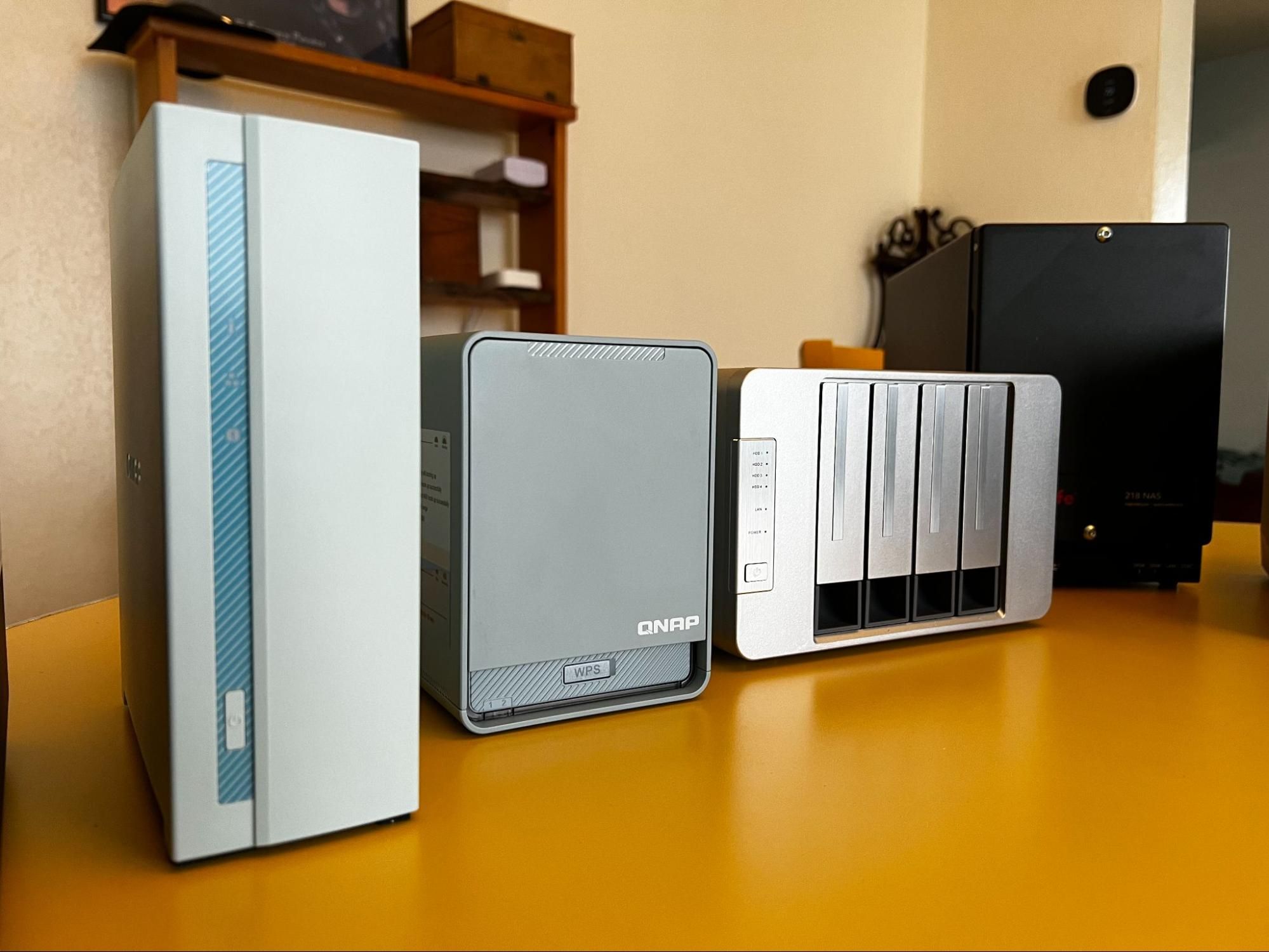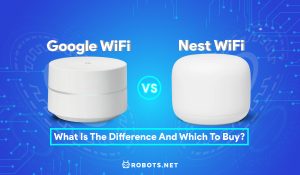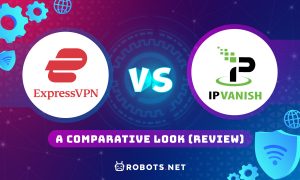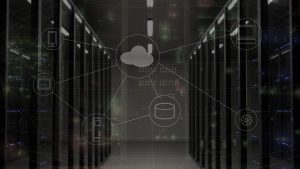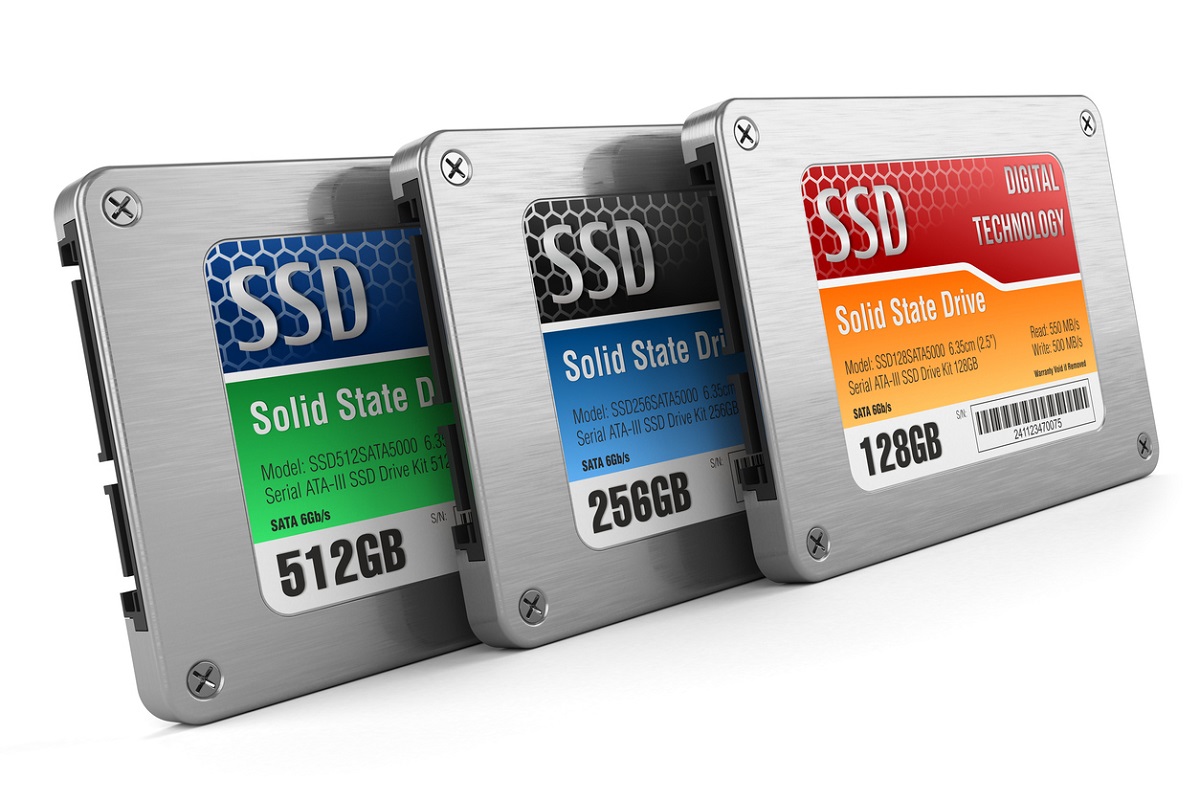Introduction
In the ever-evolving digital landscape, the need for efficient and secure data storage solutions has become paramount. Two prominent options for fulfilling this need are Network Attached Storage (NAS) and utilizing a computer as a server. Understanding the distinctions between these two options is crucial for businesses and individuals seeking to optimize their data management strategies.
As we delve into the specifics of NAS and the use of a computer as a server, it's essential to grasp the fundamental principles that underpin these technologies. By exploring their functionalities, benefits, and drawbacks, we can gain valuable insights into which solution aligns best with specific storage and accessibility requirements.
The following sections will provide a comprehensive comparison of NAS and using a computer as a server, shedding light on their unique features, advantages, and disadvantages. By the end of this exploration, readers will be equipped with the knowledge to make informed decisions regarding their data storage and management needs. Let's embark on this enlightening journey to unravel the intricacies of NAS and the utilization of a computer as a server.
What is Network Attached Storage (NAS)?
Network Attached Storage (NAS) is a dedicated file storage device that provides local network access to a centralized repository of data. It operates as an independent network node, allowing multiple users and client devices to retrieve and store data from a centralized location. NAS systems are designed to offer file-based data storage services, often through a standard Ethernet connection. These devices are equipped with their own operating system and file management capabilities, enabling seamless integration into existing network infrastructures.
NAS devices are available in various configurations, ranging from single-drive systems to multi-bay enclosures that support multiple hard drives. This scalability allows NAS to accommodate the evolving storage needs of both home users and enterprises. Additionally, NAS solutions often include features such as data backup, remote access, and media streaming, making them versatile tools for data management and accessibility.
One of the key advantages of NAS is its user-friendly setup and management interface, which typically does not require advanced IT expertise to configure and maintain. This accessibility, combined with the ability to access files from multiple devices on the network, makes NAS an attractive option for individuals and businesses seeking efficient and centralized data storage solutions.
Furthermore, NAS devices are known for their data redundancy capabilities, with many models supporting RAID (Redundant Array of Independent Disks) configurations to safeguard against data loss in the event of a hardware failure. This redundancy ensures data integrity and availability, bolstering the reliability of NAS as a storage solution.
Overall, NAS serves as a cost-effective, scalable, and user-friendly approach to centralized data storage and management, offering a wide array of features that cater to the diverse needs of modern users and organizations.
What is a Computer Used as a Server?
When a computer is utilized as a server, it functions as a centralized hub for storing, managing, and delivering data and services to other devices on a network. Unlike Network Attached Storage (NAS), which is a dedicated storage appliance, a computer used as a server leverages the hardware and software capabilities of a standard desktop or server-grade machine to fulfill these roles.
Server computers are equipped with robust processing power, ample storage capacity, and specialized software to enable them to handle a wide range of tasks, including hosting websites, managing databases, and providing file storage and sharing services. These systems often run server-specific operating systems, such as Windows Server, Linux distributions, or other specialized server software, optimizing them for reliability, security, and performance in a networked environment.
One of the defining characteristics of a computer used as a server is its versatility. It can be configured to serve various roles based on the specific needs of the network and its users. For instance, a server computer can host email services, act as a file server, run virtual machines, or function as a web server, showcasing its adaptability in meeting diverse operational requirements.
Moreover, server-grade hardware often incorporates features such as redundant power supplies, error-correcting memory, and advanced cooling systems to ensure continuous operation and minimize the risk of hardware failures. This heightened resilience is essential for maintaining the availability and integrity of critical data and services in enterprise environments.
While leveraging a computer as a server offers flexibility and customization options, it also requires a higher level of technical expertise for setup, configuration, and ongoing maintenance compared to NAS devices. Additionally, the power consumption and physical footprint of server hardware may present practical considerations for smaller-scale deployments or home users seeking a streamlined storage solution.
In essence, a computer used as a server represents a versatile and adaptable approach to centralized data management and service provision, catering to a wide spectrum of network requirements and operational demands.
Differences between NAS and Computer Used as a Server
While both Network Attached Storage (NAS) and using a computer as a server serve as centralized data storage solutions, they differ significantly in their design, functionality, and intended use cases.
- Hardware and Form Factor: NAS devices are purpose-built storage appliances, typically compact in size and designed for efficient power consumption. In contrast, a computer used as a server may encompass a broader range of hardware configurations, including server-grade components such as redundant power supplies and robust cooling systems.
- Specialization: NAS devices are optimized for file storage and sharing, often featuring user-friendly management interfaces tailored for non-technical users. On the other hand, a computer used as a server can be configured to fulfill diverse roles, such as hosting websites, managing databases, or running specialized applications beyond traditional file storage.
- Scalability: NAS solutions are generally designed with scalability in mind, offering the ability to expand storage capacity by adding additional drives or utilizing expansion units. In comparison, the scalability of a computer used as a server depends on the hardware specifications and the system’s capacity to accommodate additional storage devices and processing resources.
- Software and Management: NAS devices often come pre-configured with user-friendly management software, simplifying setup and maintenance for non-technical users. Conversely, a computer used as a server requires the installation and configuration of server-specific operating systems and applications, demanding a higher level of technical expertise for optimal performance and security.
- Power Consumption and Noise: NAS devices are engineered for low power consumption and minimal noise output, making them suitable for home and small office environments. In contrast, a computer used as a server may consume more power and generate higher levels of noise, especially when equipped with powerful hardware components.
These distinctions underscore the diverse considerations that individuals and organizations must evaluate when selecting between NAS and a computer used as a server. While NAS excels in simplicity, energy efficiency, and user-friendly operation, a server-grade computer offers unparalleled flexibility and customization options, catering to a broad spectrum of network requirements and operational demands.
Pros and Cons of NAS
Network Attached Storage (NAS) presents a range of advantages and drawbacks that warrant careful consideration when evaluating its suitability for data storage and management.
Pros:
- Easy Setup and Maintenance: NAS devices are renowned for their user-friendly setup processes and intuitive management interfaces, making them accessible to non-technical users and small businesses seeking efficient storage solutions.
- Centralized File Storage: NAS consolidates data into a centralized repository, enabling seamless file sharing and accessibility across multiple devices on the network, fostering collaboration and data consistency.
- Data Redundancy and Protection: Many NAS systems support RAID configurations, providing data redundancy to safeguard against hardware failures and data loss, enhancing data integrity and reliability.
- Remote Access and File Sharing: NAS solutions often offer remote access capabilities, allowing users to securely access and share files over the internet, facilitating seamless collaboration and data retrieval from external locations.
- Energy Efficiency: NAS devices are engineered for low power consumption, contributing to reduced energy costs and environmental sustainability, making them suitable for home and small office environments.
Cons:
- Performance Limitations: In some cases, NAS devices may exhibit performance limitations, especially when handling intensive tasks such as media streaming or hosting multiple concurrent users, necessitating careful consideration of hardware specifications.
- Scalability Constraints: While NAS solutions offer scalability through the addition of drives or expansion units, the maximum capacity and performance scalability may be limited compared to server-grade hardware configurations.
- Specialized Functionality: NAS devices are primarily tailored for file storage and sharing, limiting their suitability for hosting complex applications or specialized services that may require a more versatile server environment.
- Initial Investment: High-capacity NAS systems and enterprise-grade features may entail a significant initial investment, potentially impacting the cost-effectiveness of NAS compared to alternative storage solutions.
- Dependency on Manufacturer Support: NAS devices rely on manufacturer support for firmware updates, feature enhancements, and compatibility with evolving technologies, necessitating ongoing vendor reliance for optimal performance and security.
These considerations illuminate the multifaceted nature of NAS solutions, highlighting their strengths and limitations in addressing diverse storage and accessibility requirements.
Pros and Cons of Using a Computer as a Server
Utilizing a computer as a server offers a spectrum of advantages and disadvantages, shaping its viability as a centralized data management and service provision platform.
Pros:
- Versatility and Customization: A computer used as a server provides unparalleled flexibility, allowing users to configure and adapt the system to host diverse services, such as web hosting, database management, and specialized applications, tailored to specific operational requirements.
- Performance and Scalability: Server-grade hardware can deliver robust processing power, ample storage capacity, and scalability options, enabling efficient handling of resource-intensive tasks and accommodating the evolving demands of growing networks and workloads.
- Adaptability to Diverse Roles: The versatility of a server-grade computer empowers it to serve multiple roles within a network, ranging from file storage and sharing to hosting complex applications and virtualized environments, maximizing its utility and operational efficiency.
- Control and Security: Administrators have granular control over the server environment, facilitating tailored security configurations, access controls, and monitoring capabilities to uphold data integrity and mitigate security risks.
- Cost-Effectiveness for Specialized Needs: For organizations with specialized server requirements or those seeking to consolidate multiple server functions into a single platform, leveraging a computer as a server can offer cost-effective benefits compared to deploying multiple dedicated server appliances.
Cons:
- Complex Setup and Maintenance: Configuring and maintaining a server-grade computer demands a higher level of technical expertise, encompassing tasks such as operating system installation, application deployment, security hardening, and ongoing system administration.
- Power Consumption and Noise: Server-grade hardware may consume more power and generate higher levels of noise, posing practical considerations for home and small office environments where energy efficiency and noise levels are crucial factors.
- Hardware and Software Costs: While a computer used as a server offers customization options, the procurement and maintenance costs of server-grade hardware and software licenses may present a substantial financial investment compared to dedicated NAS solutions.
- Complexity for Non-Technical Users: The intricate nature of server configurations and administration may pose challenges for non-technical users, necessitating additional training or reliance on specialized IT support for optimal management and maintenance.
- Single Point of Failure: In configurations where a single server hosts critical services, the system represents a single point of failure, necessitating robust backup and failover mechanisms to ensure continuous service availability.
These considerations underscore the multifaceted nature of leveraging a computer as a server, emphasizing its potential benefits and challenges in meeting diverse network requirements and operational demands.
Conclusion
As we conclude our exploration of Network Attached Storage (NAS) and utilizing a computer as a server, it becomes evident that both solutions offer distinct advantages and considerations for individuals and organizations seeking efficient data storage and management mechanisms.
NAS, with its user-friendly setup, centralized file storage, and energy-efficient design, emerges as an accessible and cost-effective option for home users and small businesses. Its data redundancy capabilities, remote access features, and scalability further enhance its appeal as a versatile storage solution for a wide range of applications.
On the other hand, leveraging a computer as a server presents unparalleled flexibility and customization options, catering to diverse operational needs and resource-intensive tasks. Its performance capabilities, adaptability to varied server roles, and granular control over the server environment position it as a robust platform for hosting complex applications and services.
Ultimately, the choice between NAS and a computer used as a server hinges on the specific requirements, technical expertise, and operational objectives of the users or organizations. While NAS excels in simplicity, accessibility, and energy efficiency, a server-grade computer offers extensive customization, performance scalability, and adaptability to specialized server roles.
By weighing the unique attributes and trade-offs of each solution, users can make informed decisions aligned with their data storage, accessibility, and operational needs. Whether prioritizing user-friendly centralized storage or seeking a versatile platform for hosting diverse services, the considerations outlined in this comparison serve as valuable insights for navigating the complexities of modern data management and storage.







